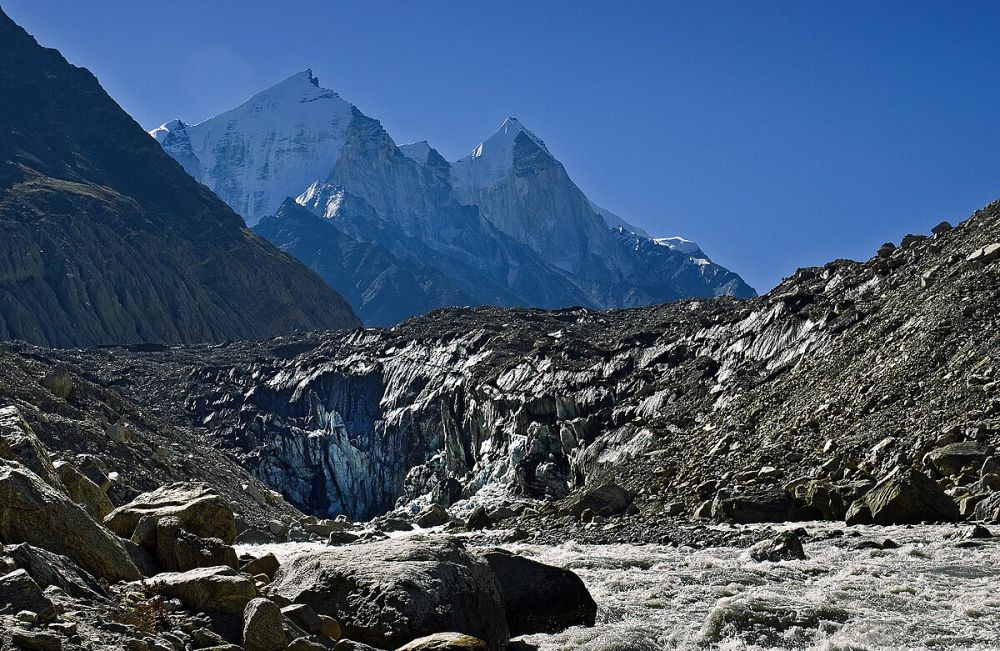

Located in the beautiful state of Uttarakhand, India, the Gaumukh Glacier is a pivotal source of the Ganges River, one of the most sacred rivers in Hinduism. The glacier lies in the Uttarkashi district and is situated at the base of the Gangotri and Shivling peaks in the Garhwal Himalayas. The word 'Gaumukh' translates to 'cow's mouth', which is said to resemble the snout of the glacier.
The Gaumukh Glacier has been a destination of religious and spiritual significance for centuries. Pilgrims have traversed these mountains as part of the Char Dham Yatra, with Gangotri being one of the four holy shrines in the Himalayas. However, the systematic development of tourism in this region began more earnestly in the 20th century.
The first recorded history of an ascent to the glacier dates back to the late 1800s. In the years that followed, Gaumukh became increasingly popular among trekkers and adventure enthusiasts.
The establishment of the Gangotri National Park in 1989 marked a significant step in structuring tourism around the glacier. This not only focused on protecting the fragile ecosystem but also laid the foundations for controlled and sustainable tourism in the area.
In recent times, the focus on sustainable tourism has intensified. The visitor numbers are often regulated to protect the delicate glacial environment. The trek to Gaumukh Glacier is not just a religious journey but has also caught the interest of nature lovers and those looking for tranquility away from urban centers.
Ecotourism is gaining traction, with emphasis on leaving minimal impact on the environment. Tourists are encouraged to engage in practices that support the local community and culture.
Adventure tourism is also a significant part of the trend as many tourists seek out the challenging trek to Tapovan, which starts from the Gaumukh Glacier. This offers panoramic views of the mountain ranges and presents a thrilling experience for hikers.
Additionally, the opening of new trek routes and improvements in local infrastructure, such as the construction of eco-friendly lodges and better transportation facilities, have made the glacier more accessible to a wider audience.
Accessibility: The nearest town to Gaumukh Glacier is Gangotri, which is well-connected by road. The trek to the glacier starts from Gangotri and is around 18 kilometers one way.
Best Time to Visit: The best time to visit Gaumukh is from May to October when the weather conditions are most favorable. The region is prone to heavy snowfall, and the trek route may close during the winter months.
Permits: All visitors need to obtain a permit from the Forest Department to trek to Gaumukh, as it lies within the Gangotri National Park.
Guidelines: Tourists are advised to follow the guidelines laid down for environmental protection, which include carrying back all non-biodegradable waste and avoiding the use of plastic.